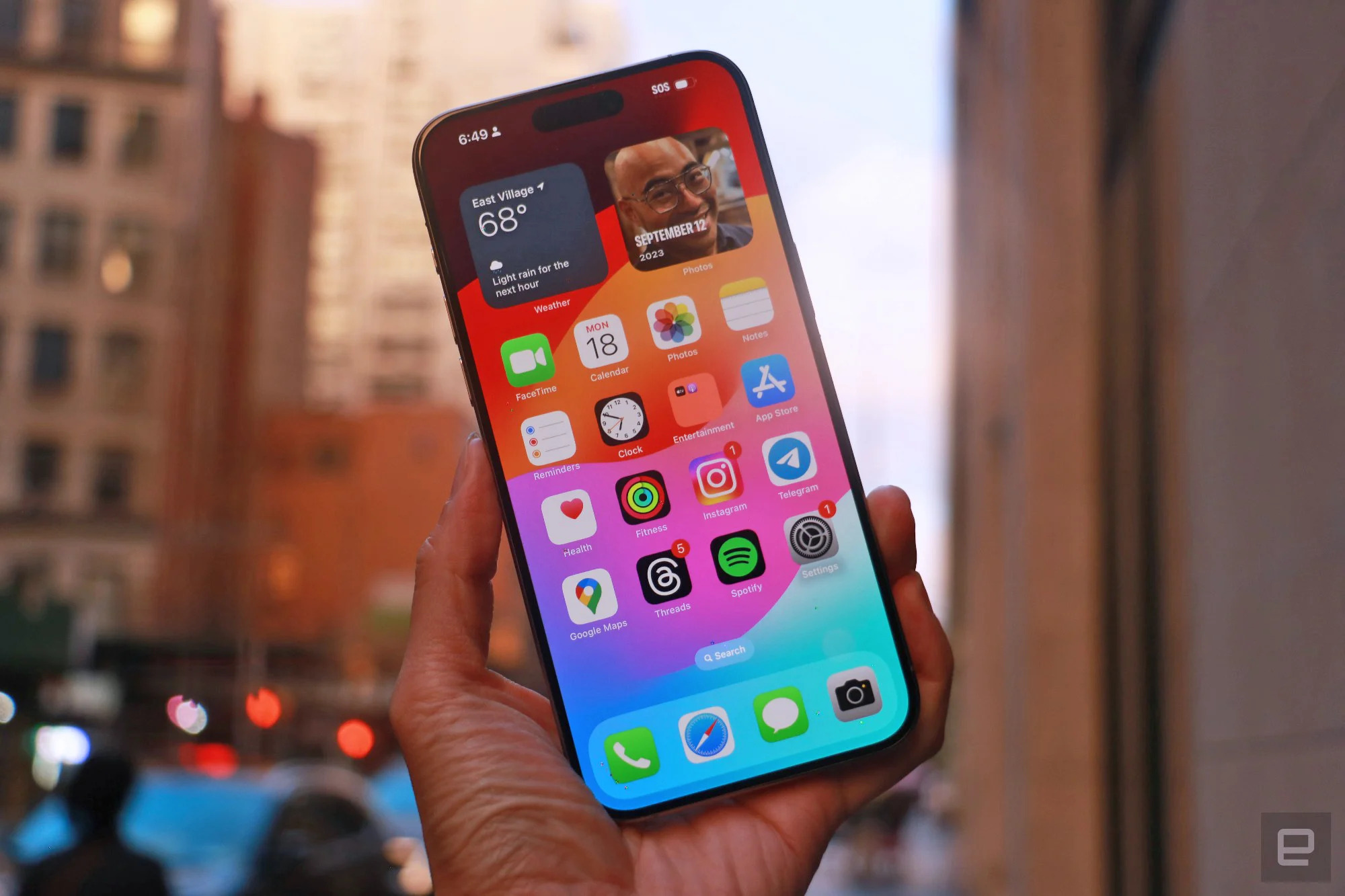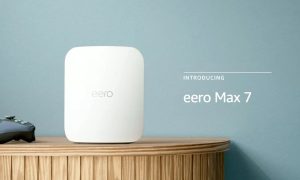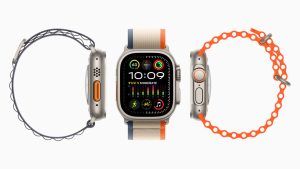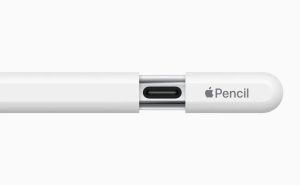After a long day at Apple Park, I found myself thinking, “Let’s charge the iPhone 15 Pro Max before going to bed.” Despite the device I had unboxed a few hours earlier still showing over 80 percent battery, I didn’t want to risk it running out of power the next day. Time with a new review unit is precious, and I couldn’t afford to waste any of it due to a dead phone.
Weary, I made my way to the work desk in my hotel room, unplugged my iPhone 14 Pro, and plugged in the Lightning charger into the iPhone 15 Pro Max. But it didn’t work. In my sleep-deprived state, I tried several more times to force the cable into the port. It took about five attempts before I realized: this was USB-C.
A glimmer of happiness broke through my tiredness, only to be followed by the realization that I had to either unplug my laptop or set up an entirely new USB-C charger. I glanced at the clock, checked the iPhone 15 Pro Max’s battery indicator, shrugged, and decided to sleep, hoping it would have enough power until I could charge it in the morning.
While my dream of a world with a single charger for all my devices had finally come true (at least for the devices I use), the reality wasn’t quite as perfect. I had hoped to carry just one charger for the handful of gadgets I travel with, but that ideal remains elusive. If I have to carry multiple wires anyway, does it really matter if one of them is Lightning?
In the end, it does matter, but the convenience of using any of my cables to charge any of my devices doesn’t make as significant a difference as I initially thought. At least not yet. Perhaps when users of older, Lightning-charging iPhones transition to USB-C, and the world fully adopts this standard, the change will have a more significant impact. For now, it’s a small change.
What could matter more on the iPhone 15 Pro and Pro Max are the new action button, camera enhancements, refined design, and updated processor. Remarkably, Apple has maintained the same prices for the Pro ($999) and Pro Max ($1,199) while doubling the storage capacity of the base model of the latter. If you’ve been holding onto an iPhone that’s at least two years old (or even just a year old), this might be the year to consider an upgrade.

Design
For the first time, I’m seriously contemplating switching to the Pro Max model. Historically, despite its performance advantages and superior features, Apple’s largest handset has always felt too bulky. However, thanks to its new titanium construction, the iPhone 15 Pro Max is slightly smaller by fractions of an inch and almost 20 grams (or about half an ounce) lighter than its predecessor. I mentioned this in my hands-on experience, and I’ll reiterate it now: The iPhone 14 Pro Max felt like it could cause serious damage if it fell on my face, whereas the new model might only leave a bruise (or perhaps a dent).
Part of this change is likely due to the new iPhone’s slightly curved edges. This not only makes them feel less sharp but also creates the illusion of a slimmer device, even though it’s actually a hundredth of an inch thicker than last year’s model.
Speaking of subtle measurements, the bezels on the iPhone 15 Pro and Pro Max are also slightly smaller than before. This is largely why Apple managed to maintain the same screen sizes while reducing the length and width of each device.

The reduction in bezel size, along with the overall design changes, has made the iPhone 15 Pro Max somewhat easier to handle with one hand. I do appreciate the brushed metal finish on my Natural Titanium review unit, although I can’t help but wish that Apple would introduce some brighter colors to the Pro line. This year’s options include the silver-ish shade I have, as well as white, black, and blue. Frankly, it’s a bit uninspiring. I understand that many people immediately put a case on their new phones, but some of us prefer to have attractive color choices like those offered on the standard iPhone 15 models.
While the iPhone 15 Pro Max is smaller and lighter than its predecessor, it’s still one of the heavier phones in its category. The Pixel 7 Pro is slightly lighter at 212 grams (7.5 ounces), while the Samsung Galaxy S23 Ultra is the heaviest at 234 grams (8.25 ounces). On the other hand, the smaller Pro model is actually lighter than the S23 Plus (195 grams) and the Pixel 7 (197 grams, 6.9 ounces).
I haven’t used these phones extensively, nor have I been brave enough to risk exposing these review units to the perils of my purse without a case. Therefore, I can’t speak to the durability or scratch resistance of the titanium build at this point. Thankfully, both devices, like previous models, are rated IP68 for dust and water resistance, providing peace of mind for even the clumsiest users.
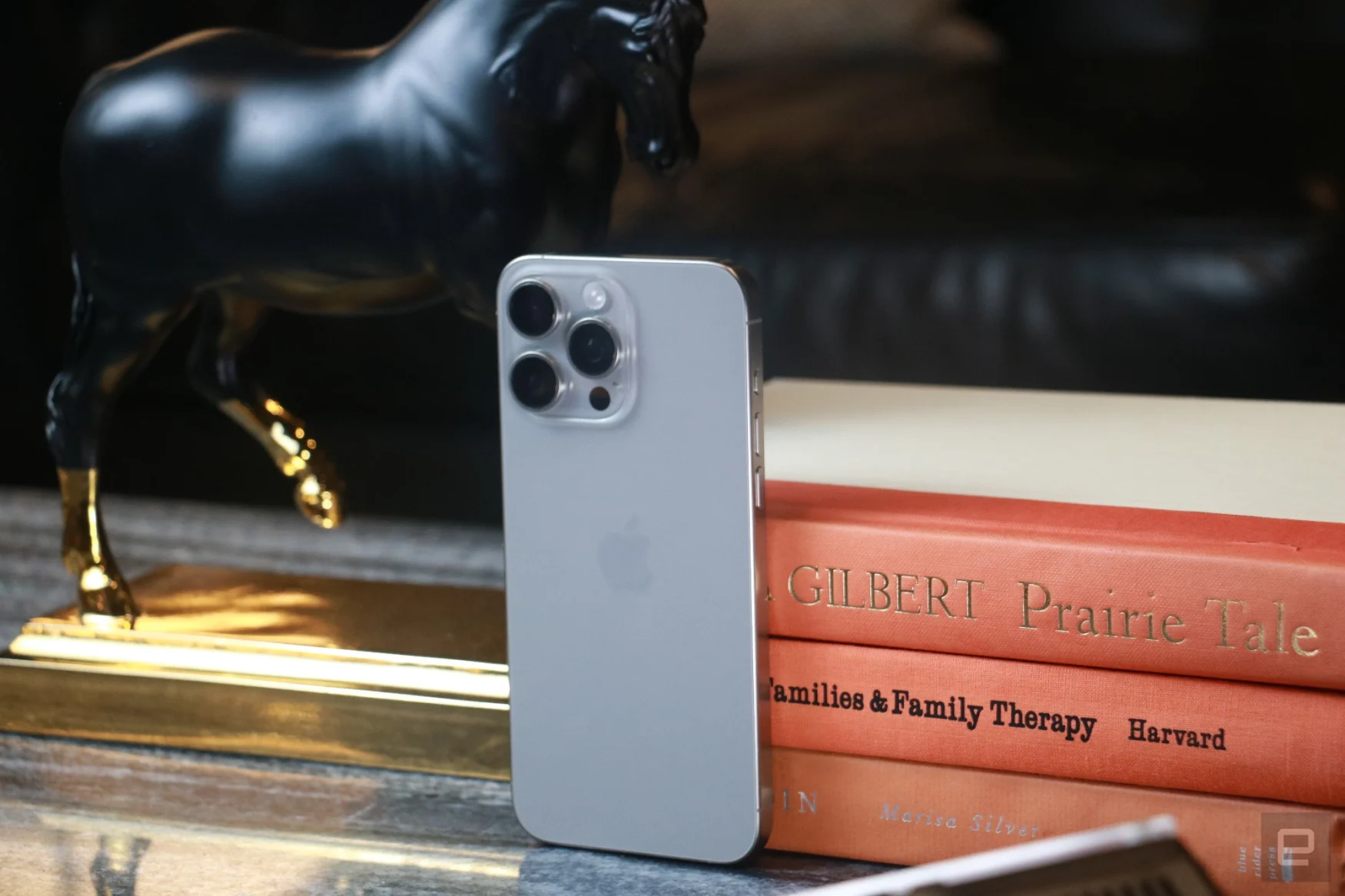
Two significant external hardware changes are introduced this year: the transition to USB-C and the addition of the Action button. These changes may not be immediately apparent if you’re not specifically looking for them. The port at the bottom still appears as a port, albeit a different type, while the Action button now protrudes slightly more than in previous models. Additionally, due to the slightly smaller size of the iPhone 15 Pros compared to their predecessors, your old case will not be compatible.
Action button
I was surprised to discover that I’m actually in the minority of people who used the mute slider on older iPhones. It seems that most individuals simply set their devices to mute and leave it at that. Personally, I often leave my phone on my couch while I’m busy with household chores, so from time to time, I would switch it to ring mode to ensure I didn’t miss important calls, like those from delivery people.
Nevertheless, I don’t mind Apple replacing the mute slider with the Action button. I still have access to a physical button for quickly muting my phone. For those who don’t use the mute function frequently, the Action button offers a range of options. You can configure it to open the camera, activate the flashlight, initiate a voice recording, adjust Focus modes, or trigger a shortcut. Within each of these options, you can fine-tune settings, such as having the camera launch in selfie or portrait mode.
Once you’ve used the Action button to activate your chosen shortcut, you can continue pressing the button to control the primary action in each scenario. For instance, in the camera app, that primary action is taking a photo. When using voice recordings, it serves as the start or stop button.
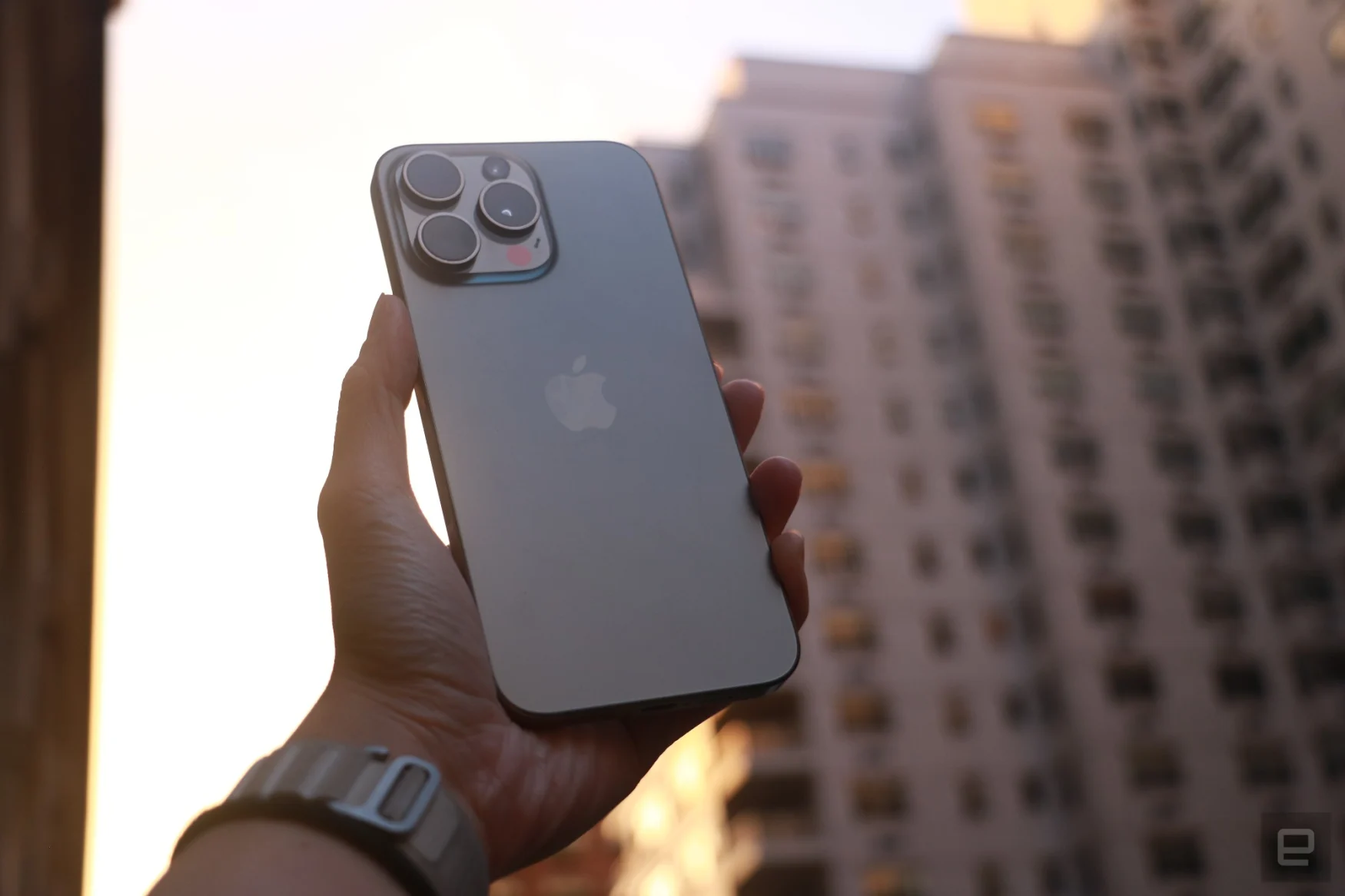
During my testing of the iPhone 15 Pro Max over the past few days, I’ve configured it to open the camera using the Action button, mainly because I’ve been focused on testing the new camera hardware. This setup has been a double-edged sword. On one hand, it’s considerably faster to use the Action button to launch the camera compared to the previous method of long-pressing or swiping on the on-screen shortcut. On the other hand, it wasn’t always the easiest to reach the Action button, and despite its distinctive size, I did accidentally press the volume keys a few times.
However, I have the sense that this gesture will become more natural with time, especially since it proved invaluable when I was quickly capturing photos of wild deer and rabbits at Caumsett State Historic Park.
It’s also worth mentioning that, despite initial concerns about accidentally triggering the Action button, I have yet to unintentionally open the camera. I’ve placed the iPhone 15 Pro Max in various bags, including one with other phones, a backpack filled with jackets and snacks, and a tightly packed overnight duffel bag. Surprisingly, none of these instances resulted in the shortcut being activated inadvertently.
Cameras — To zoom or not to zoom
In this year’s lineup, the Pro Max model features a new telephoto lens that provides an impressive 5x optical zoom. This enhancement is achieved through a tetraprism design that reflects light four times within the iPhone’s body, allowing for a substantial 120mm focal length. On the other hand, the smaller Pro model maintains a 3x optical zoom with a 77mm focal length.
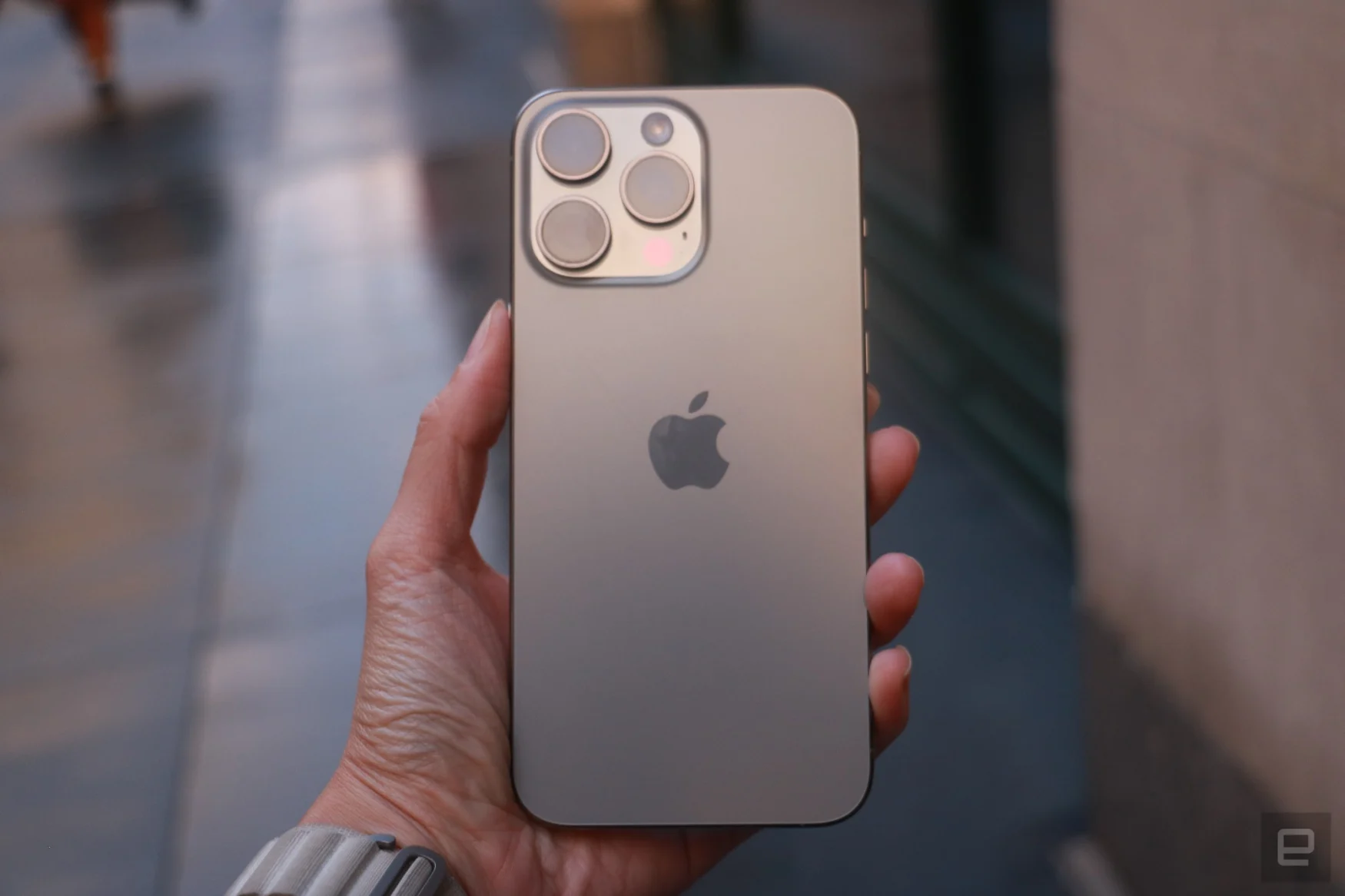
In practice, the iPhone 15 Pro Max indeed delivered close-up shots that were slightly cleaner than what its predecessor, the iPhone 14 Pro Max, was capable of. I tested both phones by taking photos of an advertisement for the iPhone 15 Pro Max on the side of a building. Only after zooming in on the pictures on my laptop did I notice a subtle difference. The newer phone rendered a window frame more accurately with less noise compared to the iPhone 14 Pro Max.
When I set both cameras to their maximum zoom range of 15x, the iPhone 15 Pro Max had a distinct advantage. The wording on the back of a distant bus was significantly clearer on the 15 Pro Max, allowing me to actually decipher what an ad said, whereas the image from the 14 Pro Max was essentially a blur.
Among its competitors, the iPhone 15 Pro Max’s closest rival in zoom photography is Google’s Pixel 7 Pro, which also offers 5x optical zoom. Samsung’s Galaxy S23 Ultra offers 3x and 10x options, with a total of 100x zoom when combined with digital processing. It’s no surprise that the Galaxy phone generally produced the clearest images at 3x, 5x, and beyond. Text was legible on distant objects, and fine details like blades of grass were more defined.
Compared to the Pixel 7 Pro, the iPhone 15 Pro Max provided similar clarity and detail, as well as brighter images. However, Google typically offers better contrast and shadows.
In a challenging scenario where I was attempting to capture a gray heron bathing in Oyster Bay, Long Island, the iPhone performed better at preserving the ripples on the water’s surface, while the Pixel mostly overexposed the sea. At 10x zoom, the Galaxy S23 Ultra’s photos of the bird had a surreal quality, resembling images of the Predator, complete with an extreme halo effect around the subject.
Both the iPhone and Pixel allow you to utilize these telephoto options while recording video, which was useful when trying to film a shy baby deer from a distance. In contrast, the Galaxy is limited to a single zoom level. Ultimately, if you frequently use your phone for capturing distant subjects, the iPhone 15 Pro Max will serve you well and has mostly caught up to the competition.
However, what might matter more in your daily photography scenarios is the updated portrait mode pipeline, enhanced with what Apple calls the “Photonic Engine.” I was particularly excited about this improvement, as I rely heavily on Portrait mode for various subjects, including food, animals, and people. For the latter two, which include cats, dogs, and humans, Apple automatically captures depth information, allowing you to edit background blur afterward without entering Portrait mode. Unfortunately, the iPhone still falls slightly behind its Pixel and Galaxy competitors in this aspect.
Gallery: iPhone 15 Pro Max camera samples
In my close-up portraits of sprinkles on a scoop of ice cream, both the Pixel 7 Pro and the Galaxy S23 Ultra managed to maintain focus on individual grains and the spoon while preserving the frosty texture of the ice cream underneath. However, the iPhone 15 Pro Max’s picture turned out messy, with large portions of the spoon and ice cream blurred and random areas in focus. This could have been a one-time occurrence, but I consistently encountered this issue with the iPhone.
Apple’s portrait effect performed better when I switched to 1x zoom, although, as with older iPhones, I had to step back a considerable distance before the bokeh effect kicked in. When it did work, the iPhone’s portrait mode produced a shallower and more pronounced depth of field compared to Google and Samsung’s phones. The Pixel delivered a more natural and subtle result.
The good news is that with Apple’s new Focus and Depth Control tool, you can go back into most pictures and edit the amount of background blur or change the focal point. This tool works well with the front camera and live photos, generally delivering pleasing results. The iPhone is surprisingly accurate at recognizing subject outlines, although not all photos with people in them were identified as portraits. Unfortunately, I couldn’t use this tool to fix the problematic ice cream photos, as multiple areas of the sprinkles remained blurry regardless of where I tried to set a new focus.
Although Apple has made improvements to its Night mode, Google still maintains the upper hand in low-light photography. My shots of trees and houses along a lake in the dark turned out best on the Pixel, which retained the gradient in the sky and details like a bench in the foreground without overexposing the lights from homes across the water. The iPhone 15 Pro Max and Galaxy S23 Ultra also performed well, but Samsung’s phone was more prone to overexposure from the lights.
It’s worth noting that the iPhone’s photos now default to a resolution of 24 megapixels, combining the light captured in 12MP shots with the detail from the 48MP sensor. This results in slightly larger file sizes, which may consume storage more quickly.
One advantage of this processing approach is that it allows Apple to offer three focal length options: 24mm, 28mm, and 35mm. In practical terms, this means you can tap the “1” icon at the bottom of the viewfinder to switch between 1x, 1.2x, and 1.5x options. Apple didn’t simply crop in from a 48MP image to create these views; it developed individual processing pipelines to enable these at the default 24MP resolution. However, for most mobile photographers, this won’t have a significant impact. It mainly translates to some nifty zoom options, which were fun to use but didn’t become my primary choice.
Overall, the iPhone 15 Pro Max consistently delivered solid results for landscapes and portraits in daylight and showed slight improvements in low-light conditions. Its video quality remains arguably the best in the industry, with cinematic mode videos retaining their aesthetic appeal.
Performance, in use and battery life
Evaluating the performance of a new phone in just a week can be challenging. Typically, when a handset is fresh out of the box, it exhibits little to no lag, and the iPhone 15 Pro Max is no exception. With its A17 Pro chip, the phone delivered the level of speediness you would expect. It smoothly handled multiple camera and video modes, simultaneous downloads of games, picture access, and hotspotting to another nearby iPhone. However, I did notice some minor hiccups when launching the camera using the Action button, but this is likely related to software quirks rather than a performance issue.
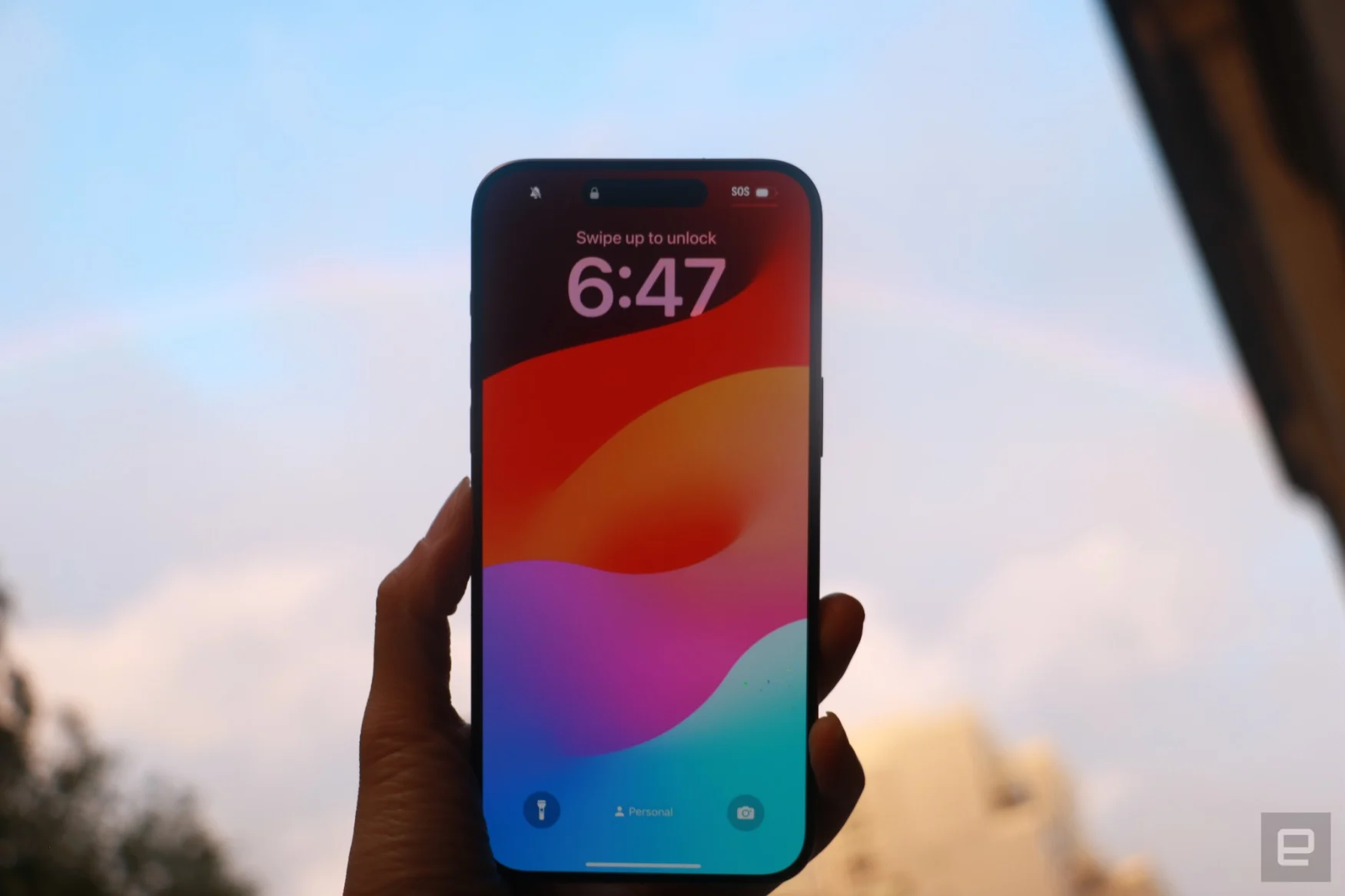
One of the significant upgrades with the A17 Pro processor is the inclusion of a six-core graphics processor, enabling hardware-accelerated ray tracing for realistic lighting effects in games. This feature has attracted serious developers and studios like Capcom and Ubisoft to bring console-level versions of their titles to the iPhone. I had the opportunity to preview Resident Evil Village on the iPhone 15 Pro, and it ran smoothly with no dropped frames. While it doesn’t quite reach the level of high-end console quality, the graphics and lighting effects are impressive, and animations generally look good.
The 6.7-inch display on the Pro Max, combined with the ProMotion’s 120Hz refresh rate, makes for a visually pleasing experience. Scrolling through long lists on Instagram or enjoying the clear and loud background music in a hotel room is a delight.
As mentioned earlier, the move to USB-C brings some real-world advantages, including support for USB Power Delivery (USB PD). This feature allows the iPhone to charge other devices, such as an AirPods case or another iPhone, using a USB-C to Lightning cable.
The iPhone 15 Pro Max boasts excellent battery life, typically lasting about two days on a single charge, which is longer than many other smartphones of similar size. Over time, battery life may degrade, settling at around one and a half days based on previous experiences.
When it’s time to recharge, you can expect similar charging speeds to older models, with up to 50 percent charge in about 30 minutes when using compatible power units. Fast charging is supported, capped at 27 watts, which is consistent with previous models.
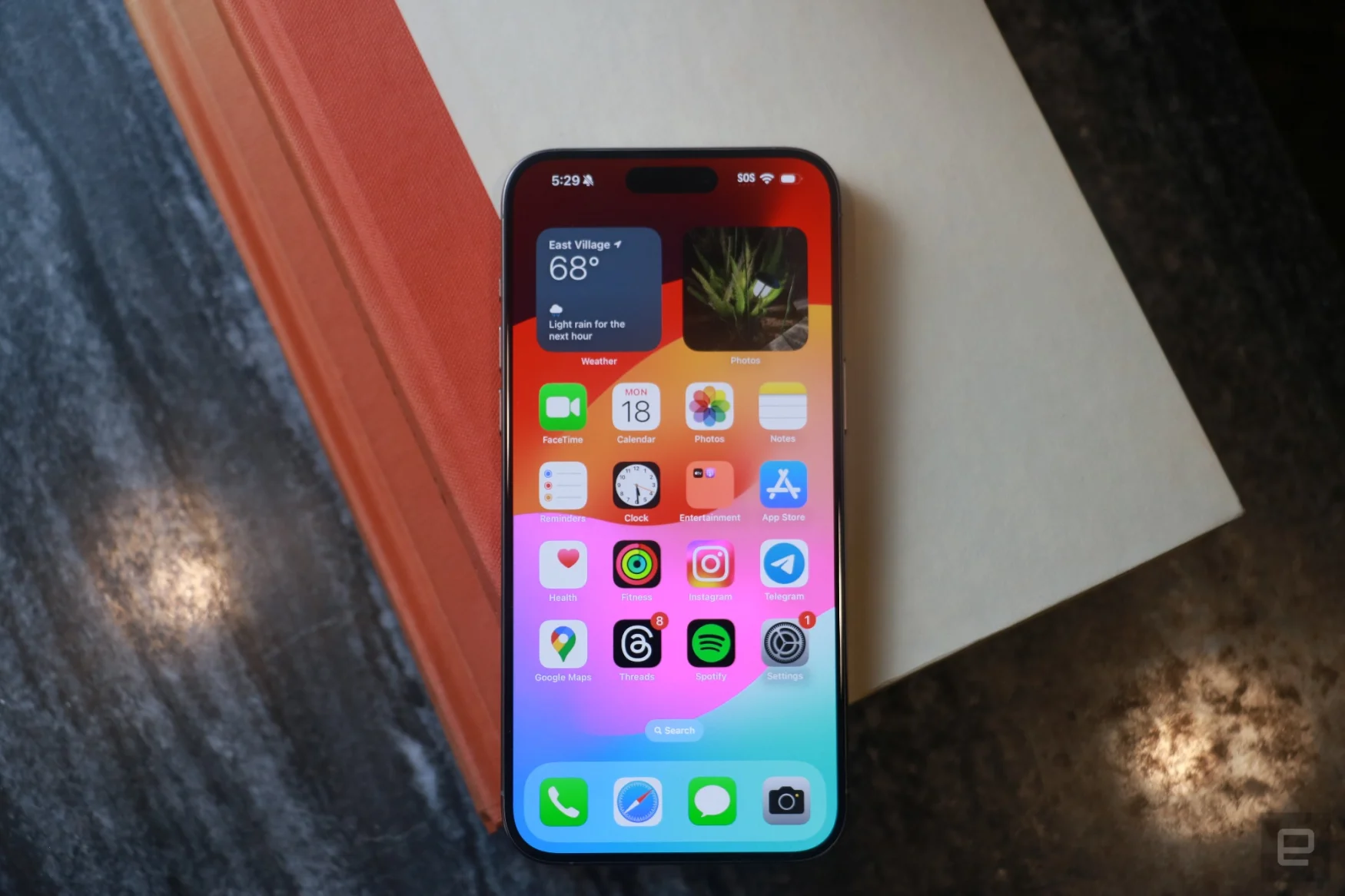
Is the iPhone 15 Pro Max worth it?
The new iPhones for this year represent significant upgrades compared to their predecessors. With the introduction of the Action button, USB-C, camera improvements, and the new titanium build, Apple’s Pro handsets feel more substantial than before. Additionally, advancements like the A17 Pro processor and a second-generation ultra-wideband chip contribute to smooth day-to-day performance. While each individual feature may appear minor on its own, the collective set of updates for this year adds up to more than the sum of its parts.
There are also the non-Pro models of the iPhone 15 to consider, with their 48MP sensors and attractive colors, providing a compelling, lower-cost alternative. They also support USB-C and offer the same new portrait image effects, which should be sufficient for most users. A review of the standard iPhone 15 will be available soon, making it easier to decide between the standard iPhone 15 and the Pro models.
For users who have been loyal to the Pro line and are accustomed to a USB-C ecosystem, the iPhone 15 Pro and Pro Max are likely to meet their expectations and needs.

